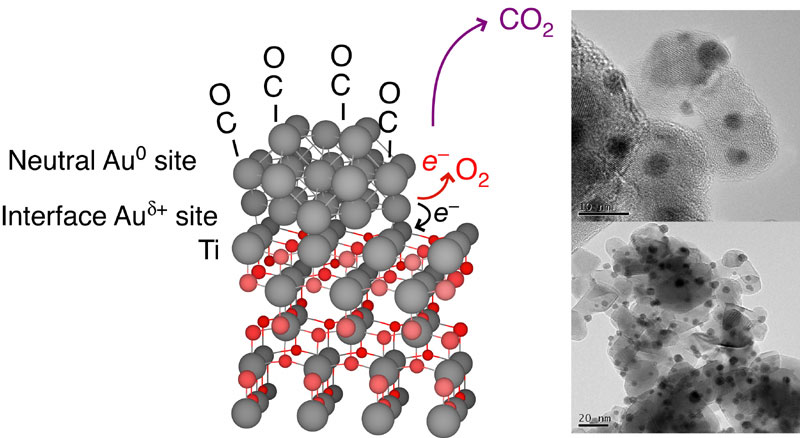
State-sensitive monitoring of gold nanoparticle sites on titania and the interaction of the positive Au site with O2 by Au L alpha1-selecting X-ray absorption fine structure |
Yasuo Izumi, Dear Mossbauer, Kazushi Konishi, Dilshad Masih, Masafumi Takagaki, Yasuko Terada, Hajime Tanida, Tomoya Uruga, Inorganica Chimica Acta, 361(4), 1149 - 1156 (2008). [The PDF file]
The heterogeneity of gold sites in various Au/TiO2 catalysts was studied by means of state-sensitive Au L3-edge X-ray absorption fine structure (XAFS) combined with high energy-resolution X-ray fluorescence spectrometry. A series of Au/TiO2 catalysts were prepared via deposition-precipitation method on anatase-type or mesoporous (amorphous) TiO2 added with NaOH (lower Au loading) or urea (higher Au loading). The mean Au particle size ranged between 29 and 87 angstroms based on high-resolution TEM (transmission electron microscope) measurements. The Au L alpha1 emission peak energy for Au/mesoporous-TiO2 in air and Au/anatase-TiO2 in CO (5%) corresponded to Au(0) state. The emission peak energy for Au/anatase-TiO2 in air shifted toward that of Au(I) state. For relatively greater Au particles (average 87 angstroms dispersed on mesporous TiO2, the major valence state discriminated by Au L alpha1-selecting XANES (X-ray absorption near-edge structure) spectrum tuned to Au L alpha1 emission peak top was Au(0), but the Au(delta-) state could be successfully monitored by Au L alpha1-selecting XANES tuned to the emission energy at 9707.6 eV, of which population was relatively small compared to the case of smaller Au particles (average 29 angstroms) on anatase-type TiO2. On the other hand, negative charge transfer from Au 5d to support was demonstrated in Au(delta+)-state sensitive XANES tuned to 9718.3 - 9718.7 eV. The Au(d+)-state sensitive XANES spectra resembled theoretically generated XANES for interface Aud+ sites model on TiO2 in contact with surface Ti sites. Further charge transfer was demonstrated from Au to adsorbed O2 for Au/anatase-TiO2 catalyst.

Chiba University > Graduate School of Science > Department of Chemistry > Dr. Yasuo Izumi Group